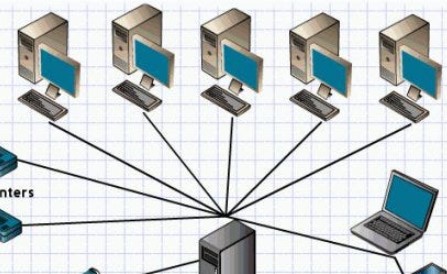Understanding Networking Operating Systems: The Backbone of Network Management
In an era driven by connectivity and the ever-increasing demand for efficient data exchange, networking operating systems (NOS) play a crucial role in managing and controlling network resources. This blog aims to explore what a networking operating system is, its key functions, its differences from traditional operating systems, and its importance in modern networking environments.
What is a Networking Operating System (NOS)?
A networking operating system (NOS) is a specialized operating system designed to facilitate the management, coordination, and operation of network resources and services. It provides the necessary tools and protocols for devices to communicate effectively over a network. Unlike traditional operating systems designed mainly for personal computers and servers, NOS focuses specifically on delivering reliable network services and managing connections among multiple devices across a network.
Key Functions of a Networking Operating System
Networking operating systems provide various functionalities that are essential for efficient network operations:
- Resource Sharing: NOS enables multiple users and devices to access shared resources such as files, printers, and applications over a network, facilitating collaboration and improving efficiency.
- User Management and Security: Networking operating systems often include features for user authentication, authorization, and management. This helps ensure that only authorized users can access specific network services and resources.
- Network Communication: NOS manages various communication protocols that allow devices from different vendors and network architectures to communicate seamlessly. Protocols such as TCP/IP, UDP, and others are fundamental for data transmission.
- Centralized Management: A NOS typically provides centralized control over network resources and devices. Network administrators can monitor network performance, configure settings, and troubleshoot issues from a central location.
- File and Print Services: NOS offers network file systems and printing services, allowing users to store and share files as well as manage print jobs over the network.
- Network Services: Networking operating systems can offer various services, including DHCP (Dynamic Host Configuration Protocol) for IP address management, DNS (Domain Name System) for name resolution, and more.
Differences Between Networking Operating Systems and Traditional Operating Systems
While networking operating systems share some similarities with traditional operating systems, such as managing hardware and software resources, there are key differences:
- Target Audience: Traditional operating systems are designed for individual machines, focusing on personal computing needs. In contrast, NOS caters to networks involving multiple nodes, emphasizing communication and resource sharing.
- Resource Management: NOS is built to manage network resources, such as bandwidth and file sharing, whereas traditional operating systems focus on managing the resources of a single computer.
- Networking Protocols: While traditional OS may support limited networking functionality, NOS extensively implements various networking protocols to facilitate communication over a broader scope.
- Configuration: NOS typically requires more sophisticated configuration to handle various network topologies, protocols, and services than traditional operating systems, which primarily deal with local hardware.
Examples of Networking Operating Systems
Numerous networking operating systems are available today, catering to diverse networking needs. Some prominent examples include:
- Cisco IOS: Primarily used in Cisco routers and switches, Cisco’s Internetwork Operating System (IOS) facilitates routing and switching functions to ensure secure and efficient data traffic management.
- Juniper Junos: This NOS is known for its high performance and reliability, widely used in Juniper Networks’ routers and switches to manage data communications effectively.
- Microtik RouterOS: A versatile networking OS that supports routing, firewall, VPN services, and hotspot management, commonly used by ISPs and network administrators.
- Linux-based NOS: Various Linux distributions, such as Ubuntu Server and CentOS, can be configured as networking operating systems, providing tools like Samba for file sharing and DHCP servers for IP management.
- Windows Server: Microsoft’s Windows Server editions offer powerful networking capabilities, including Active Directory for user management and web services to host applications over a network.

Importance of Networking Operating Systems
Networking operating systems are vital for modern network infrastructures. Here’s why:
- Enabling Connectivity: NOS enables devices across different locations to connect and communicate, forming the backbone of networked environments crucial for businesses, government institutions, and more.
- Facilitating Collaboration: By allowing users to share resources effortlessly, networking operating systems improve collaboration and efficiency within organizations.
- Enhancing Security: NOS provides numerous security features to protect network resources against unauthorized access and cyber threats, safeguarding sensitive data.
- Centralized Control: Network administrators can monitor, manage, and troubleshoot an entire network from a central point, significantly simplifying network operations.
- Scalability: Many networking operating systems are designed to scale easily, accommodating the growing demands of expanding networks and additional users.
Conclusion
Networking operating systems serve as the foundation of networked environments, supporting communication, collaboration, and resource sharing across devices. They provide the essential infrastructure and tools needed to manage complex networks in today’s interconnected world.
With a growing reliance on networked services in various sectors, understanding and leveraging networking operating systems is crucial for network administrators, businesses, and anyone involved in managing digital resources. As technology evolves, keeping abreast of NOS developments will further empower users and organizations to navigate the dynamic landscape of networking effectively.
In conclusion, as we move toward an increasingly interconnected future, the roles and functionalities of networking operating systems will only become more critical in ensuring seamless communication and robust network management. Happy networking!
